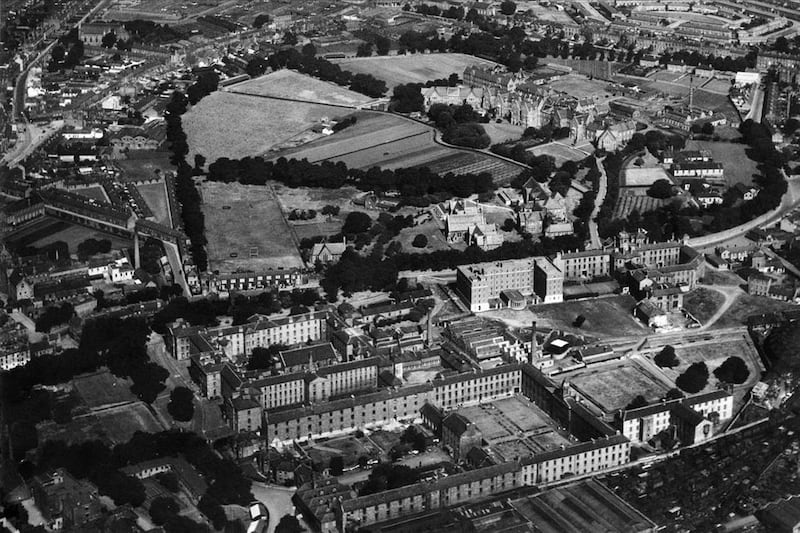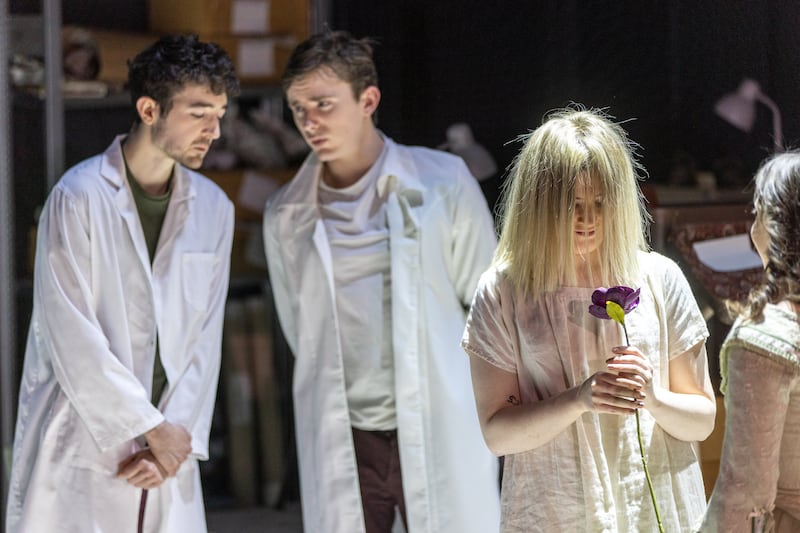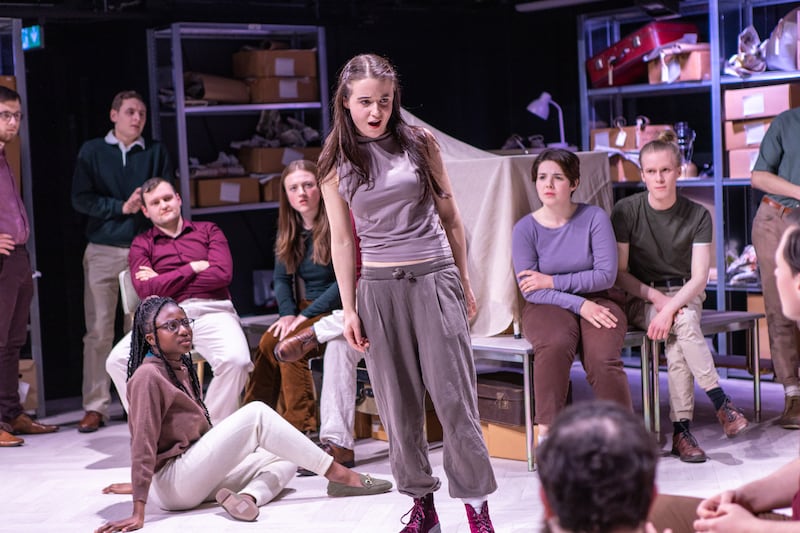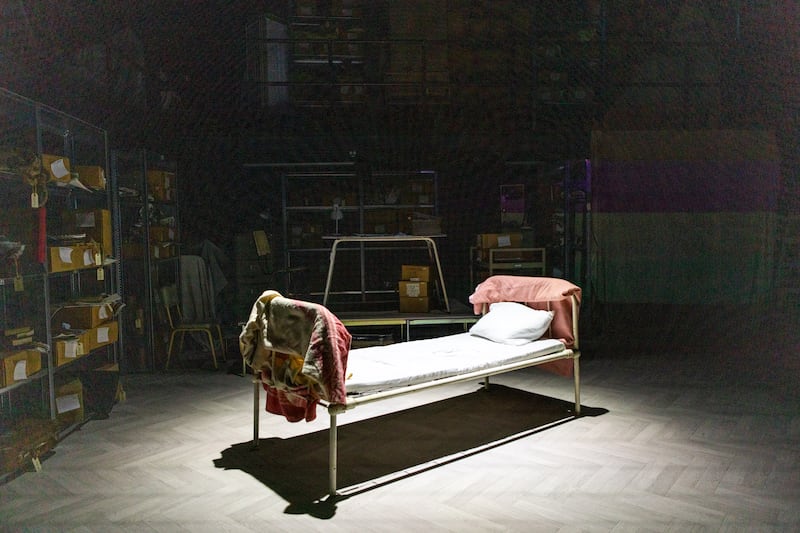The word asylum implies a place of safety. Add a definite article, to make it “the asylum”, and you conjure the idea of a grim institution, its languishing inmates lost. You may sense a certain amount of fear. But when the Richmond Lunatic Asylum first opened at Grangegorman, in north Dublin, in the early 19th century, it was a bright open campus, with graceful buildings and extensive grounds, even if they were encircled by walls. So what happened?
This is the subject of The Asylum Workshop, an intriguing play by Colin Murphy, written in collaboration with, and performed by, final-year drama students at Technological University Dublin, which is now based at the Grangegorman grounds. The play, which was first performed in a short run at the end of 2022, draws from a series of drama workshops as well as from the Grangegorman archives.
“It was a process of discovery,” says Peter McDermott of the TU Dublin Conservatoire, who directed and produced The Asylum Workshop. He is speaking about the experience of exploring the institution’s historical papers and objects, which are now with the National Archives of Ireland, and about the idea of wanting to make visible the layers of stories embodied in the new campus, following his department’s move from its previous home, in Rathmines.

It is quite the history, too. Go back in time to find orchards and farmlands. It was here that a prison was built, and a workhouse. The Richmond Lunatic Asylum followed, then a shell-shock treatment centre and, towards the present day, St Brendan’s, which, when it opened in 1851, was Ireland’s first public psychiatric hospital. At one point the hospital had more than 2,000 patients. Now the smaller HSE Phoenix Care Centre, which has 54 beds, is on site.
RM Block
“Sometimes, when we talk about institutions, it can be easy to talk about numbers,” says Brendan Kelly, professor of psychiatry at Trinity College Dublin, who advised on the play and who also appears in the script as a character. Pinpointing how a system originally devised to be humane, respectful and effective in its treatments can decline to become little more than an exercise in crowd control, he adds that during the 1950s and 1960s there were about 20,000 people in Ireland’s mental hospitals. “Today we have fewer than 2,000 people in in-patient psychiatric care, the third-lowest in Europe,” he says.
The play opens with the drama students rehearsing scenes from Hamlet – perhaps the ultimate play within a play within a play. From there, their own observations are layered with fragments from the archives and dramatised testimony from patients. (Murphy notes that their names have been changed for privacy.) In one telling juxtaposition, Kelly’s character is speaking with the students, describing how “when you go out of here today, and you observe the beautiful landscaping, the light, the lovely buildings – the sense of openness – that’s probably what it felt like when it opened in 1814. It was a beautiful institution. It was built in a spirit of very great therapeutic optimism – this absolute belief in the power of institutions to cure and to help and to fix society.”
The next lines belong to a former patient, named in the script as Mick: “I was transferred to 8B – a locked ward. It was notorious. People walked around all day inside the ward, tapping cigarettes off each other, picking butts up off the floor – think of a lion in a lion cage, in the zoo.”

Mick’s characterisation of the workings of his mind describes someone who needs support but possibly not institutionalisation, and part of the richness of the play lies in the way in which Murphy explores the different workings of various minds, and the different ways that incarceration was used to remove “undesirables” from society. Chillingly, the play demonstrates that such undesirability may have been economic, familial or social. People could be removed involuntarily to a mental institution on the say-so of a family member, and frequently were.
A journalist as well as a playwright, Murphy has tended to concentrate on social and societal themes, including such events as the marriage-equality referendum, with A Day in May; and Haughey | Gregory, with Fishamble. With The Asylum Workshop he brings the same nuanced view to delicate questions such as the pernicious role of our narrow definition of “normal”, the way society treats difference, and what it does with those who threaten to disrupt the comfortable conception of how things ought be, according to those in charge.
Through the clever device of shuttling backwards and forwards through time and perspectives, we come to realise that these questions remain the same. As the play opens, the students are gently bickering about ideas of “wokeness”. It is easy to dismiss those who claim fragile sensibilities. But, as it concludes, the realisation is that unless we find a way to support and include other ways of mentally and emotionally navigating the world, we not only consign our brothers and sisters to the margins but also lose the power that such different outlooks and mindsets may bring to make valuable change.

Things have changed. According to Kelly, legislation passed in the mid-19th century meant that someone could be incarcerated if they even “appeared to be a lunatic about to commit a crime. They could be sent to prison and then to an asylum. It was a path to the mental hospital with a very low bar.” Today that bar is much higher, although perhaps we have gone too far in the opposite direction, to arrive at a similarly negative result. As Kelly says, “we now have people with serious mental-health issues in prison, homeless and, untreated, at home.
[ ‘Isolated from the mainstream’: Portrane asylum in the 1950sOpens in new window ]
“What Colin, Peter and these amazing students are doing,” Kelly continues, “is exploring the biggest institutions in Irish history. And what is really uncomfortable about them for Ireland is that the Roman Catholic Church did not run them. They were secular. We cannot blame the church.”

“One lesson we can take from it,” Murphy says, “is that we have to keep striving to do better, realising that our mistakes will only be exposed down the line. The next generation may discover how wrong we were as well, but we still have to keep trying.”
The Asylum Workshop, supported by Grangegorman Histories, opens at the Black Box Theatre, TU Dublin, tomorrow and runs until Saturday, June 24th
[ Misery in Ireland's 'massive mausoleums of madness'Opens in new window ]





















